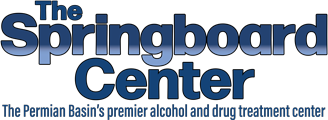Rehab costs swing wildly from $20,000 to over $60,000 for a 30-day program.
This huge price range leaves families scrambling to understand what they’re actually paying for. Some high-end facilities charge premium prices for luxury amenities that don’t improve recovery outcomes. Others offer solid, evidence-based treatment at much lower costs.
When addiction affects your family, you shouldn’t have to choose between quality care and financial stability. Understanding how much rehab costs helps you make informed decisions during an already difficult time. We’ll break down exactly what drives these price differences and show you how to find excellent treatment that fits your budget.
You’ll learn which costs are necessary and which are just expensive extras that don’t improve your chances of lasting recovery.
Springboard offers high quality, gold-standard care, at a significantly reduced price due to our non-profit status and the gracious donations of our wonderful community. Reach out today to learn more about how we can support you.
Related: Involuntary Rehab: What Families Need to Know About Court-Ordered Treatment
What Factors Drive Rehab Costs Higher or Lower
Several key elements determine whether you’ll pay $20,000 or $50,000 for addiction treatment. Understanding these factors helps you evaluate options and avoid paying for services that don’t improve outcomes.
Geographic Location and Regional Cost Differences
Where you seek treatment dramatically affects how much rehab costs. Major metropolitan areas like Los Angeles, New York, and Miami typically charge 40-60% more than smaller cities. California and coastal regions command the highest prices due to real estate costs and higher staff wages.
Texas facilities often provide excellent value compared to coastal states. The lower cost of living allows treatment centers to offer quality programs at reduced rates. Rural areas generally offer the most affordable options, though they may have fewer specialized services available.
Regional licensing requirements also impact pricing. States with stricter regulations often see higher costs due to increased compliance expenses and staff training requirements.
Facility Type and Amenities Offered
Luxury rehab facilities can cost $60,000 or more for 30 days. These programs often include private rooms, gourmet meals, spa services, and resort-like settings. While comfortable, these amenities don’t necessarily improve recovery success rates.
Standard residential facilities focus resources on clinical care rather than luxury features. These programs typically range from $20,000 to $40,000 for 30 days. They provide private or semi-private rooms, nutritious meals, and comfortable common areas without the premium price tag.
Basic residential programs strip away non-essential amenities to focus purely on treatment. These facilities may cost $20,000 to $25,000 for 30 days while still providing evidence-based care and professional staff.
Length of Stay and Program Intensity
Thirty-day programs represent the most common residential treatment option. However, many people benefit from 60 or 90-day stays, which obviously increase total costs. Longer treatment duration can provide more comprehensive recovery support for severe addictions.
Intensive programs with more therapy hours, specialized treatments, or medical supervision cost more than basic programs. Programs offering 4-6 hours of daily therapy charge more than those providing 2-3 hours. Additional services like trauma therapy or family counseling increase overall expenses.
The rehab costs breakdown shows that some facilities offer shortened programs to reduce costs. While these may seem appealing financially, they often provide insufficient time for meaningful recovery work, potentially leading to relapse and additional treatment expenses later.
How Much Different Types of Rehab Programs Cost

Different treatment levels serve various needs and budgets. Understanding these options helps you choose the right fit for your situation and financial resources. Families often ask how much rehab costs for each treatment level before making decisions.
Inpatient Residential Treatment Pricing
Residential treatment represents the most intensive and expensive option. These programs provide 24/7 medical supervision, structured daily schedules, and comprehensive therapeutic services. The average cost of rehab for residential programs ranges from $20,000 to $50,000 for 30 days.
High-end residential facilities in premium locations can reach $60,000 or more for a month-long stay. These programs often target affluent clients and emphasize luxury amenities alongside clinical care. Several facilities in Texas offer quality residential programs around $40,000 for 30 days, providing excellent value for comprehensive care.
Budget-conscious residential options range from $20,000 to $25,000 for 30 days. These programs focus resources on essential clinical services rather than luxury features. They still provide professional medical care, individual therapy, group counseling, and structured programming.
Outpatient Program Cost Ranges
Outpatient treatment allows people to live at home while attending therapy sessions several times per week. These programs cost significantly less than residential options while still providing professional support.
Standard outpatient programs typically cost $3,000 to $8,000 for a 12-week program. Intensive outpatient programs require more hours per week and may cost $5,000 to $12,000 for similar timeframes. These programs work well for people with strong home support systems and less severe addictions.
The cost of inpatient vs. outpatient rehab shows significant differences. Partial hospitalization programs fall between inpatient and outpatient costs. They provide daily treatment while allowing patients to return home each evening. These programs typically range from $8,000 to $15,000 for 4-6 weeks of treatment.
Medical Detoxification Service Fees
Medical detox represents the first step in many treatment journeys. This process safely manages withdrawal symptoms under professional medical supervision. Detox alone typically costs $2,700 to $6,300 for 3-7 days.
Factors affecting rehab costs during detox include the substances involved, severity of withdrawal symptoms, and length of medical supervision needed. Alcohol and benzodiazepine detox often require longer medical monitoring due to potentially dangerous withdrawal complications.
Some facilities include detox in their overall program pricing. Others charge separately, which can add unexpected costs to your treatment budget. Always clarify whether detox fees are included in quoted program prices.
Why Insurance Coverage for Rehab Varies So Much
Insurance coverage for rehab varies dramatically between plans and providers. Understanding your benefits before starting treatment prevents financial surprises and helps you plan effectively.
What Most Insurance Plans Actually Cover
The Affordable Care Act requires insurance plans to cover addiction treatment as an essential health benefit according to HealthCare.gov. However, coverage levels vary significantly between basic and comprehensive plans. Coverage amounts depend on your specific plan’s deductibles, copayments, and benefit structure.
Many plans cover inpatient treatment for shorter periods (7-14 days) but provide better coverage for outpatient services. Some plans require step-down approaches, starting with outpatient treatment before approving residential care. Prior authorization requirements can delay treatment starts and add administrative complexity.
Insurance typically covers medically necessary services like detox, individual therapy, group counseling, and psychiatric care. Luxury amenities, alternative therapies, and extended stays beyond medical necessity usually aren’t covered.
How to Verify Your Benefits Before Treatment
Contact your insurance company directly to understand your specific addiction treatment benefits. Ask about deductibles, copayments, out-of-network penalties, and annual benefit limits. Get written confirmation of coverage details to avoid disputes later.
Treatment facilities often provide insurance verification services. However, verify information independently since facilities may emphasize coverage while downplaying costs. Some facilities employ insurance specialists who can help maximize your benefits and identify potential cost savings.
Request pre-authorization for treatment when possible. This process confirms coverage and reduces the risk of denied claims. Keep detailed records of all communications with your insurance company throughout the treatment process.
Common Coverage Gaps and Unexpected Costs
Many insurance plans have gaps that create unexpected expenses for families. Annual or lifetime benefit caps can leave you responsible for costs once limits are reached. Some plans cover initial treatment but provide limited coverage for continuing care or relapse treatment. Understanding how much rehab costs with your specific insurance plan prevents surprises.
Out-of-network providers often result in significantly higher out-of-pocket costs. However, quality in-network options may be limited in your area. Balance network restrictions against the quality and availability of care when making decisions.
Certain services commonly excluded from coverage include transportation to treatment, family therapy sessions, extended sober living arrangements, and non-traditional therapies. These services can add thousands to your total treatment investment.
What Hidden Costs of Rehab Catch Families Off Guard

Beyond basic program fees, several additional expenses can significantly impact your total treatment investment. Planning for these costs prevents financial stress during recovery.
The Springboard Center does not have any hidden fees. The only exception would be if a client wants further care an is uninsured. If insured, then out-of-pocket will likely have already been met, and extended treatment will likely be covered. If you have any additional questions, please contact us! We’re happy to help.
Additional Medical Services and Assessments
Comprehensive medical evaluations often occur before treatment starts. These assessments can cost $500 to $2,000 depending on complexity. Mental health evaluations, lab work, and specialized testing for co-occurring conditions add to initial expenses.
Some people require psychiatric medications during treatment. These costs may not be included in program fees and can range from $100 to $500 monthly. Medical complications or emergency care during treatment create additional expenses not covered by basic program pricing.
Ongoing medical monitoring, especially for complex cases, may extend beyond standard program costs. Specialized treatments for medical conditions related to substance use can add significant expenses to your treatment budget. Remember, this is for other facilities. Ours doesn’t have any hidden fees.
Extended Stay and Aftercare Program Fees
Many people benefit from longer treatment than initially planned. Extended stays can add $15,000 to $30,000 to your total costs. While expensive, longer treatment often provides better value than abbreviated programs.
Aftercare services like continuing therapy, family program participation, and ongoing support groups may involve additional fees. These services are crucial for maintaining sobriety but aren’t always included in initial program pricing.
Sober living arrangements after residential treatment provide structured support during early recovery. Quality sober living facilities typically cost $800 to $2,000 monthly, depending on location and services provided.
Transportation and Family Involvement Expenses
Traveling to treatment facilities creates costs many families don’t anticipate. Flights, hotels, rental cars, and meals can easily add $2,000 to $5,000 to your treatment investment. Some facilities provide transportation services, but these often come with additional fees.
Family therapy sessions and educational programs benefit the entire family but may require travel and time off work. Weekend family programs are common but can involve hotel stays and meal costs for out-of-town families.
Regular visits during long-term treatment create ongoing transportation expenses. Factor these costs into your budget, especially for extended stays or facilities far from home.
Remember, Springboard Center does not have any hidden fees!
Where to Find High-Quality Affordable Rehab Programs
Quality addiction treatment doesn’t require luxury prices. Several options provide excellent care at reasonable costs for families willing to prioritize clinical outcomes over amenities.
Non-Profit Treatment Centers and Community Support
Non-profit treatment centers often provide exceptional care at reduced costs. These facilities focus resources on clinical services rather than profit margins. Community donations and grants help keep costs lower while maintaining high treatment standards.
Many non-profit centers offer sliding scale fees based on income and family size. This approach makes quality treatment accessible to families across different economic situations. Some facilities provide scholarship programs for those who demonstrate financial need and commitment to recovery.
Religious and community-based organizations sometimes sponsor treatment costs for local residents. These programs often combine professional treatment with strong community support networks that continue after formal treatment ends.
State-Funded Programs and Sliding Scale Options
State and federally funded programs provide affordable rehab programs for low-income individuals and families. These programs may have waiting lists but offer treatment at minimal cost. Eligibility requirements typically include income limits and residency requirements.
Some states offer voucher programs that help cover treatment costs at approved private facilities. These programs bridge the gap between public and private treatment options, providing more choices while maintaining affordability.
Sliding scale programs adjust costs based on your ability to pay. Many quality facilities offer these options to ensure financial barriers don’t prevent people from getting needed help. These programs often require financial documentation but can reduce costs by 30-70%.
How to Evaluate Quality vs. Cost Trade-offs
Focus on evidence-based treatment approaches rather than facility amenities when evaluating options. Look for programs offering individual therapy, group counseling, medical supervision, and family involvement. These core services matter more than luxury features for long-term success. When comparing facilities, how much rehab costs should be balanced against the quality of clinical care provided.
Research facility licensing, accreditation, and staff qualifications. Quality programs employ licensed addiction counselors, medical professionals, and experienced support staff. Check facility reviews and ask about treatment approaches when evaluating options.
Consider total cost including aftercare and continuing support. Some higher-priced programs include extensive aftercare that provides better value than cheaper programs requiring separate continuing care arrangements. The National Institute on Drug Abuse emphasizes that continuing care significantly improves long-term recovery outcomes.
How The Springboard Center Makes Quality Treatment Affordable
Facing rehab costs doesn’t have to mean choosing between quality care and financial stability. The Springboard Center provides gold-standard addiction treatment at significantly reduced costs through our non-profit status and generous community support. While many facilities charge $40,000 to $60,000 for 30-day programs, we offer comprehensive care that includes medical supervision, individual counseling, group therapy, and family support without hidden fees.
Our evidence-based programs in Midland, Texas focus on approaches that actually work rather than expensive amenities. We use proven methods like the Matrix Model and 12 Step principles to help individuals achieve lasting recovery. Plus, because we have non-profit status and get gracious donations from our community, we are a highly accessible community.
Don’t let cost concerns delay getting the help you need. Contact us today to learn about our affordable treatment options. Visit The Springboard Center to discover how much rehab costs when quality treatment and affordability work together for your family’s healing and hope.




